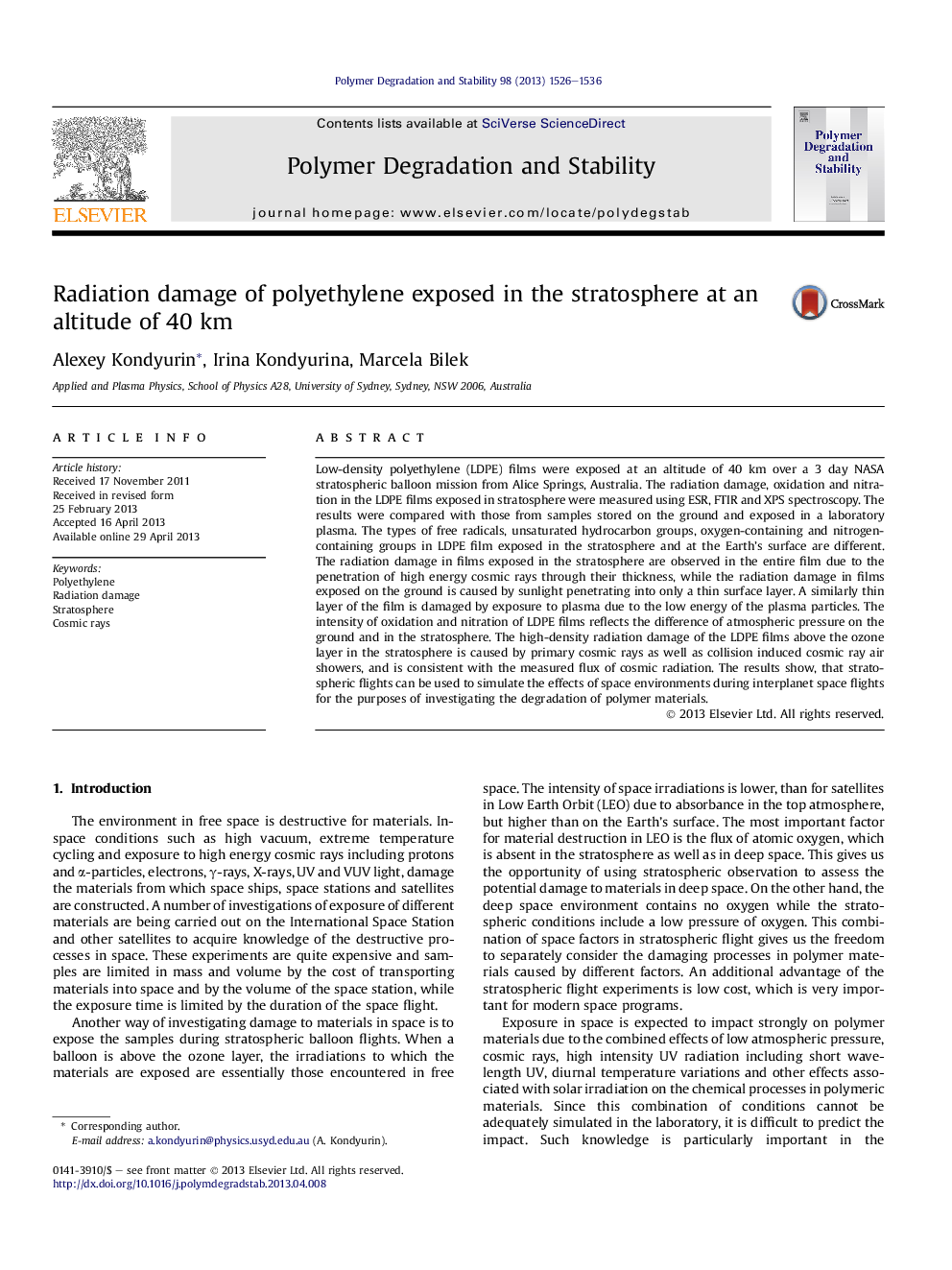| Article ID | Journal | Published Year | Pages | File Type |
|---|---|---|---|---|
| 5202231 | Polymer Degradation and Stability | 2013 | 11 Pages |
Low-density polyethylene (LDPE) films were exposed at an altitude of 40Â km over a 3 day NASA stratospheric balloon mission from Alice Springs, Australia. The radiation damage, oxidation and nitration in the LDPE films exposed in stratosphere were measured using ESR, FTIR and XPS spectroscopy. The results were compared with those from samples stored on the ground and exposed in a laboratory plasma. The types of free radicals, unsaturated hydrocarbon groups, oxygen-containing and nitrogen-containing groups in LDPE film exposed in the stratosphere and at the Earth's surface are different. The radiation damage in films exposed in the stratosphere are observed in the entire film due to the penetration of high energy cosmic rays through their thickness, while the radiation damage in films exposed on the ground is caused by sunlight penetrating into only a thin surface layer. A similarly thin layer of the film is damaged by exposure to plasma due to the low energy of the plasma particles. The intensity of oxidation and nitration of LDPE films reflects the difference of atmospheric pressure on the ground and in the stratosphere. The high-density radiation damage of the LDPE films above the ozone layer in the stratosphere is caused by primary cosmic rays as well as collision induced cosmic ray air showers, and is consistent with the measured flux of cosmic radiation. The results show, that stratospheric flights can be used to simulate the effects of space environments during interplanet space flights for the purposes of investigating the degradation of polymer materials.
